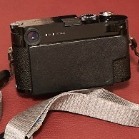TRI-ELMAR
-
Recently Browsing 0 members
- No registered users viewing this page.
-
Similar Content
-
- 3 replies
- 249 views
-
- 5 replies
- 675 views
-
- 7 replies
- 460 views
-
- 14 replies
- 5,408 views
-
- 4 replies
- 820 views
-





.thumb.jpg.f34df1ead8e9be2c41e731fb53ce9e0b.jpg)
Recommended Posts
Join the conversation
You can post now and register later. If you have an account, sign in now to post with your account.
Note: Your post will require moderator approval before it will be visible.